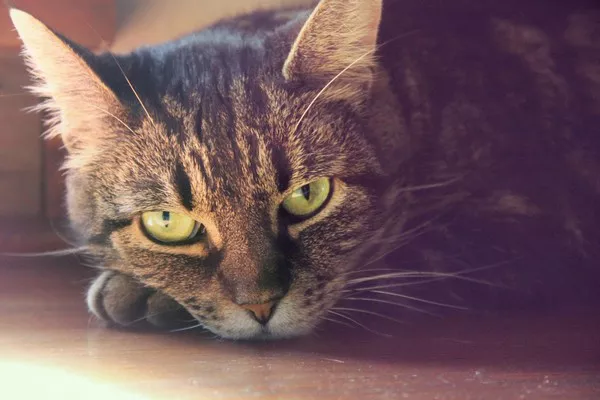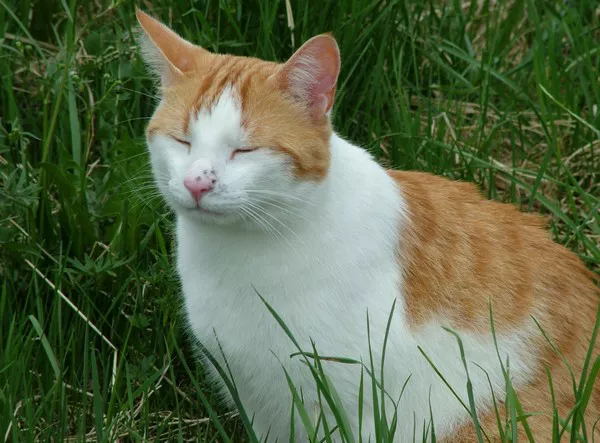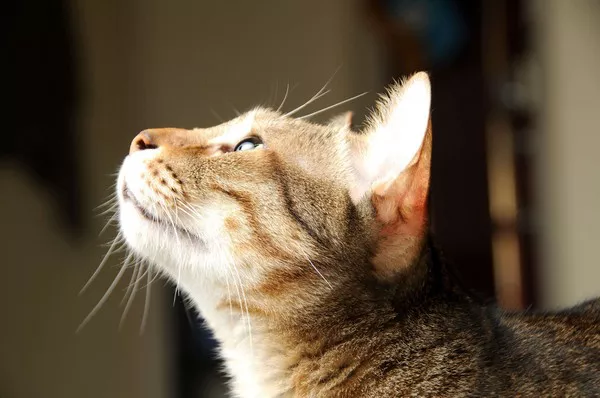Cats are known for their independent and sometimes unpredictable behavior, and understanding their social dynamics can be complex. One common concern among cat owners is whether a healthy cat will attack a sick cat. This issue can be particularly worrying in multi-cat households where one cat falls ill. To address this concern, it’s essential to delve into feline behavior, communication, and social structure. This comprehensive article explores the reasons behind aggressive behavior, how illness affects feline interactions, and strategies to manage and prevent conflicts.
Understanding Feline Social Behavior
Feline Hierarchies and Territoriality
Cats are territorial animals with complex social structures. In multi-cat households, they establish a hierarchy that can influence their interactions. This hierarchy is not always linear and can be fluid, depending on various factors such as age, gender, and individual personalities.
Territory: Cats are highly territorial and may become aggressive if they perceive their space is being invaded. Each cat in a household often claims specific areas as their own, and they use scent marking to delineate their territories.
Hierarchy: Dominance hierarchies can exist in multi-cat households, where certain cats assume dominant roles. These hierarchies are established through various social behaviors, including grooming, play, and occasional aggression.
Communication and Body Language
Cats communicate primarily through body language, vocalizations, and scent marking. Understanding these signals can help identify potential conflicts and intervene before they escalate.
Body Language: Signs of aggression include flattened ears, dilated pupils, hissing, growling, and a raised, puffed-up tail. Submissive behaviors include crouching, avoiding eye contact, and rolling over to expose the belly.
Vocalizations: Growling, hissing, and yowling are common vocal signals of discomfort or aggression. Purring can sometimes indicate contentment but can also occur when a cat is in pain or distress.
Scent Marking: Cats use scent glands on their face, paws, and tail base to mark their territory. This behavior helps establish boundaries and convey messages to other cats.
The Impact of Illness on Feline Behavior
Changes in Scent and Appearance
When a cat becomes ill, several changes can occur that may trigger aggression from other cats in the household.
Scent Changes: Illness can alter a cat’s scent, making them smell different to other cats. Since cats rely heavily on scent for recognition, this change can cause confusion and potentially provoke aggression.
Physical Appearance: Visible signs of illness, such as lethargy, limping, or changes in grooming habits, can make a cat appear weak and vulnerable. In the animal kingdom, weakness can sometimes prompt attacks from healthier individuals to establish dominance or eliminate competition.
Behavioral Changes
Sick cats often exhibit changes in behavior that can disrupt the established social order.
Irritability and Aggression: A sick cat may become more irritable and aggressive due to pain or discomfort. This behavior can lead to conflicts with other cats.
Withdrawal and Hiding: Ill cats may seek solitude and hide more frequently, which can alter the social dynamics in a multi-cat household. This withdrawal can lead to increased tension and potential aggression from other cats.
Reduced Social Interaction: Sick cats may engage less in social behaviors such as grooming and play. This reduction in social interaction can lead to a breakdown in social bonds and increased aggression.
Aggression in Multi-Cat Households
Types of Aggression
Understanding the different types of aggression that can occur in multi-cat households is crucial for identifying and addressing conflicts.
Redirected Aggression: This occurs when a cat is agitated by an external stimulus (such as seeing another cat outside) and redirects that aggression towards another cat in the household.
Territorial Aggression: Cats may become aggressive when they feel their territory is being invaded. This type of aggression is more common when introducing a new cat to the household or when a cat’s scent changes due to illness.
Fear-Induced Aggression: Illness can make a cat feel vulnerable and fearful, leading to defensive aggression. Healthy cats may also react aggressively out of fear if they do not recognize the sick cat due to scent changes.
Status-Related Aggression: This occurs when cats compete for dominance or resources, such as food, water, and resting places. A sick cat may become a target if it is perceived as weak and unable to defend its status.
See Also: Why Does My Calico Cat Meow So Much?
Signs of Aggression
Recognizing the signs of aggression can help prevent serious conflicts. Look for:
Staring and Stalking: One cat staring intently at another or stalking behavior can indicate impending aggression.
Blocking Access: Dominant cats may block access to resources such as food, water, or litter boxes.
Chasing and Swatting: Chasing and swatting are clear signs of aggression and dominance struggles.
Injuries: Scratches, bites, and other injuries are signs that aggression has escalated to physical conflict.
Preventing and Managing Aggression
Environmental Enrichment
Providing a stimulating and enriched environment can help reduce aggression by keeping cats mentally and physically engaged.
Vertical Space: Cats love to climb and perch on high surfaces. Providing cat trees, shelves, and perches can help reduce tension by allowing cats to establish vertical territories.
Hiding Spots: Ensure there are plenty of hiding spots and safe spaces for each cat. This can include covered beds, boxes, and cat tunnels.
Interactive Play: Engage your cats in regular interactive play sessions to release pent-up energy and reduce stress. Use toys that mimic prey, such as feather wands and laser pointers.
Scratching Posts: Provide multiple scratching posts to allow cats to mark their territory and engage in natural behaviors.
Resource Management
Managing resources effectively can help prevent competition and reduce aggression.
Multiple Feeding Stations: Set up multiple feeding stations in different areas of the house to prevent competition over food.
Separate Litter Boxes: Provide one litter box per cat plus one extra, and place them in different locations to prevent territorial disputes.
Water Stations: Ensure there are multiple water sources to avoid competition and ensure all cats stay hydrated.
Behavioral Interventions
Behavioral interventions can help address underlying issues and prevent aggression.
Desensitization and Counter-Conditioning: Gradually expose cats to each other in a controlled manner, using positive reinforcement to create positive associations.
Feline Pheromones: Use synthetic feline pheromones, such as Feliway, to create a calming environment and reduce stress-related behaviors.
Professional Help: Consult with a veterinarian or a certified animal behaviorist if aggression persists. They can provide tailored advice and interventions based on your cats’ specific needs.
When to Seek Veterinary Help
Identifying Health Issues
If you notice sudden changes in behavior or increased aggression, it’s essential to rule out underlying health issues.
Regular Check-Ups: Ensure all cats receive regular veterinary check-ups to monitor their health and catch any issues early.
Pain Management: If a cat is in pain due to illness or injury, managing their pain can significantly reduce irritability and aggression.
Behavioral Changes: Sudden behavioral changes should be evaluated by a veterinarian to rule out medical causes.
Managing Illness
Effective management of the sick cat’s condition can help reduce stress and aggression.
Medication and Treatment: Follow your veterinarian’s recommendations for treating the sick cat’s condition. Ensure they receive all prescribed medications and treatments.
Isolation if Necessary: In some cases, temporarily isolating the sick cat may be necessary to allow them to recover and reduce stress for all cats in the household.
Conclusion
Understanding the dynamics between healthy and sick cats is crucial for maintaining a peaceful multi-cat household. While a healthy cat may attack a sick cat due to changes in scent, appearance, or behavior, there are numerous strategies to prevent and manage aggression. By providing an enriched environment, managing resources effectively, and seeking veterinary care when necessary, you can help ensure that all your feline companions live harmoniously.
Addressing aggression in multi-cat households requires patience, observation, and sometimes professional help. By understanding the underlying causes and taking proactive steps, you can create a safe and stress-free environment for both your healthy and sick cats.

























